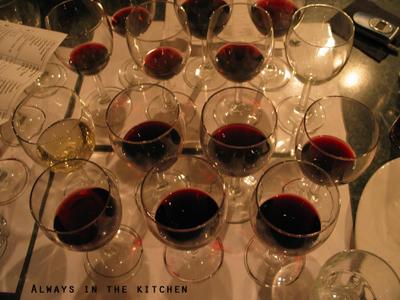 I love the idea of heirloom vegetable varietals, but I love the flavours even more. These little beauties, captured at the Trout Lake Community (Farmers') Market, are Purple Prince (front) and Black Krim tomatoes. The darkness of the tomatoes is not due to poor lighting (for a change) but rather a much darker, muddier hue than the brilliant red globes we are most familiar with. I also received a small bag of sungold cherry tomatoes - orange as pumpkins, sweet, and undefinably delicious in that way that only homegrown tomatoes can be - from my market-perusing partner in crime. She manages a small, but robust garden along the side of her house, and usually has great luck with tomatoes. Sadly, I devoured them by the fistful before remembering to take out the camera.
I love the idea of heirloom vegetable varietals, but I love the flavours even more. These little beauties, captured at the Trout Lake Community (Farmers') Market, are Purple Prince (front) and Black Krim tomatoes. The darkness of the tomatoes is not due to poor lighting (for a change) but rather a much darker, muddier hue than the brilliant red globes we are most familiar with. I also received a small bag of sungold cherry tomatoes - orange as pumpkins, sweet, and undefinably delicious in that way that only homegrown tomatoes can be - from my market-perusing partner in crime. She manages a small, but robust garden along the side of her house, and usually has great luck with tomatoes. Sadly, I devoured them by the fistful before remembering to take out the camera.These are the little treasures that make me happy, if not downright excited, to get to work on in the kitchen. Two Black Krims were fatly sliced and alternated with equally fat slices of fresh buffalo mozzarella and large basil leaves, drizzled with olive oil and lemon juice, salt and pepper to make a stunning insalata caprese for Saturday night's dinner.
I like regular tomatoes just fine, too. As long as they're ripe, there isn't a tomato that I'm likely to turn my nose up at; sliced tomatoes on toast are my favourite quick summer breakfast, and for the most part, I use the bright red tomatoes from the local market. It is now, when the summer days have stretched almost to snapping, that the ripe heirlooms in the darker hues make their dusty, lumpy and misshapen appearance, and these are the very best tomatoes of all.
Now, of course it is very fashionable to grind on the large conglomerate producers - purveyors of the monoculture way of growing that is leading certain strains of produce into extinction - but at the end of the day, it's this: heirloom varieties taste better. Oh, sure, there are reasons not to grow some of the varieties - lack of flavour, lack of hardiness, large seed-size - these are the reasons that some varietals fall by the wayside. But, for those that can be carefully raised to good flavour - they just require more care, knowledge and attention to get a usable crop. Locally is the only way to purchase these more fragile, fussy or challenging types. Food that is raised locally doesn't have to travel as far, so it doesn't have to be picked unripe for transport. Since the food isn't unripe, it doesn't have to have ripeness (or the verisimilitude) forced upon it by various gasses that make so much of our supermarket produce look ready to eat - even when it is as hard as a rock and has as much flavour developed as a wad of paper.
I'd like to think that, by buying heirloom varieties of fruits and vegetables, that I am encouraging diversity, preserving the flavours of yesteryear, supporting my local community, and getting some wonderful food into the bargain.
Check out the BC Directory of Farmers' Markets. These are great places to get the unique, the specialized, and the local. Hurry, though - the market season is ending soon.












